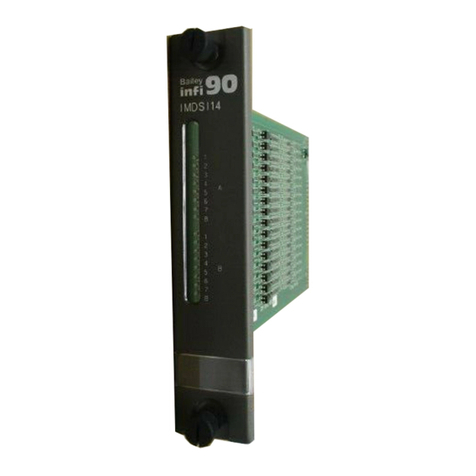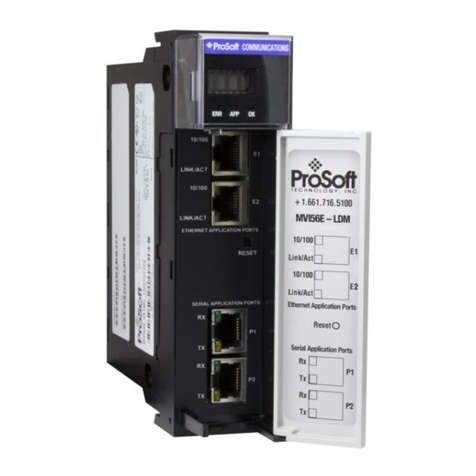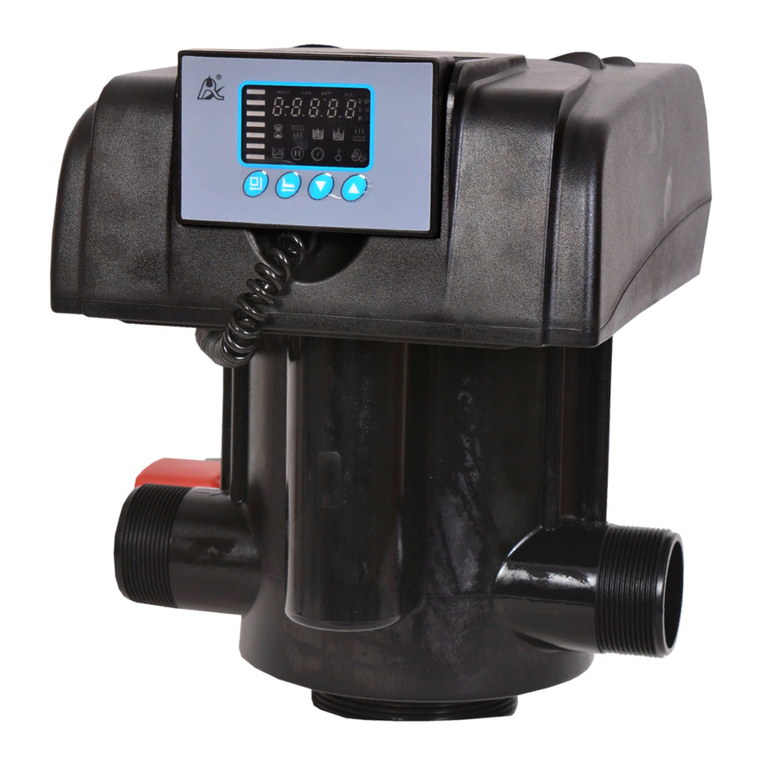Brahms Proxinet 8 Owner's manual

PROGRAMMING MANUAL
SECURITY ALARM CONTROL UNIT
English
EN
English
EN

Page 2- Programming Manual 24805480/14-11-2012 319F92C ver. 1.2 -The data and information in this manual may be changed at any time with no obligation on BRAHMS’s part to notify anyone of this.
ENGLISH
1 Symbols and glossary
This symbol indicates the parts which describe safety issues.
This symbol indicates parts which must be read with care.
Permanently on warning light.
Warning light off.
Rapidly flashing warning light.
INSTALLER: any person or business responsible for designing and installing the system.
USER: any persons using the security alarm system.
INDEX
1 SYMBOLS AND GLOSSARY .................................................................................PAGE 2
2 TECHNICAL MENU.........................................................................................PAGE 3
ACCESSING THE TECHNICAL MENU............................................................................................................3
2.1 PROGRAMMING MODE .............................................................................................3
MENU ITEMS BELONGING TO OTHER MODES ..................................................................................................3
EASY MODE .................................................................................................................................4
STANDARD MODE ...........................................................................................................................4
ADVANCED MODE ........................................................................................................................... 4
2.2 INSTALLATION......................................................................................................5
EDIT SYSTEM ................................................................................................................................5
REMOTE KEYPAD ADDRESSING ...............................................................................................................5
ADDRESSING REMOTE INSERTERS ............................................................................................................5
SYSTEM TEST ................................................................................................................................6
BUS RS485 ..................................................................................................................................6
PXLAN/PXWEB CONFIGURATION..............................................................................................................7
2.3 SCENARIOS.........................................................................................................8
2.4 AREAS .............................................................................................................9
2.5 KEYPADS ..........................................................................................................10
2.6 INSERTERS ........................................................................................................11
2.7 INPUTS............................................................................................................12
2.8 OUTPUTS..........................................................................................................17
2.9 TIMES .............................................................................................................18
2.10 TELEPHONE NOTIFICATIONS ......................................................................................20
2.11 ASSOCIATING OUTPUT ...........................................................................................23
2.12 CODES ...........................................................................................................24
2.13 KEYS .............................................................................................................26
2.14 TELEPHONES .....................................................................................................27
2.15 TELEPHONE OPTIONS ............................................................................................28
2.16 SPECIAL FUNCTIONS .............................................................................................30
2.17 SCHEDULER ......................................................................................................31
2.18 EVENTS ..........................................................................................................32
2.19 CLOCK ...........................................................................................................32
2.20 DEFAULT PARAMETERS ...........................................................................................33
3 EVENTS MESSAGING ......................................................................................PAGE 33
4 REFERENCE LAWS .........................................................................................PAGE 36
5 DECLARATION ............................................................................................PAGE 36

Page 3- Programming Manual 24805480/14-11-2012 319F92C ver. 1.2 -The data and information in this manual may be changed at any time with no obligation on BRAHMS’s part to notify anyone of this.
ENGLISH
2 Technical Menu
Depending on the ( CODES -> INSTALLER’S TECHNICAL CODE ), parameters TEC MENU ACCESS , access to the technical
menu may be either preceded or not by the User code.
Simultaneous access to the technical menu or user menu from multiple keypads is not allowed.
2.1 Programming mode
For the burglar-proof alarm control unit to be as user-friendly as possible, from inexperienced installers to the most demanding
professionals), the system features the “programming mode” concept. This can give either few or many parameters depending on
the individual installer’s skill or needs.
08:23 16/05/10
ENTER CODE
123456
COMMAND STANDBY
*=USER MENU
222222
MODE OF 01
PROGRAMMING
PROGR.MODE
EASY
*
+
-
▼
▲
Programming mode: (Default EASY )
F
S
A
EASY only base parameters for simple systems are available.
STANDARD only simple standard system parameters are available.
ADVANCED all configurable parameters are available.
Passing from Advanced to Easy means automatic reconfiguring of the parameters
which will be hidden.
Following are the main differences among the three types:
MENU ITEMS BELONGING TO OTHER MODES
This manual shows all of the menu items as if it were in ADVANCED mode.
To understand which menu item mode is viewable and therefore editable just look at which letters appear in the top right hand corner
of each item’s description.
F
S
A
Item found in the three modes
S
A
Item found in standard and advanced modes
A
Item found only in advanced mode
ACCESSING THE TECHNICAL MENU
2
2
34
1
INDIRECT ACCESS
Press and hold the /ESC # key to access the Technical Menu, enter the user code 123456 , press the /ESC # key again
for 5 seconds and enter the technical code 222222 . Use the
+-
keys to scroll down one character at a time, and the
keys
to modify the text.
+++
DIRECT ACCESS
When the system is fully disengaged press the /ESC # key for 5 sec and enter the technical code 222222 to access the
Technical Menu. Use the
+-
keys to scroll down one character at a time, and the
keys to modify the text.
+
5 sec 5 sec
123456 222222
5 sec 222222
1

Page 4- Programming Manual 24805480/14-11-2012 319F92C ver. 1.2 -The data and information in this manual may be changed at any time with no obligation on BRAHMS’s part to notify anyone of this.
ENGLISH
EASY MODE
The EASY programming mode lets you quickly and simply start up low-complexity systems or is used by non highly skilled installing
technicians.
The pre-configured settings are the following:
INDEX AREA DESCRIPTION INDEX AREA DESCRIPTION
1 DAY AREA 3 PERIMETER AREA
2 NIGHT AREA
INDEX SCENARIO DESCRIPTION ASSOCIATED AREAS PROPERTIES
1 GOING OUT 1, 2, 3 TURN ON+OFF.EXACT
2 GOING TO BED 1, 3 TURN ON+OFF.EXACT
3 STAYING INDOORS 3 TURN ON+OFF.EXACT
KEYPADS ASSOCIATED SCENARIOS INSERTERS ASSOCIATED SCENARIOS
ALL KEYPADS
A GOING OUT
ALL INSERTERS
L1 GOING OUT
B GOING TO BED L2 GOING TO BED
C STAYING INDOORS L3 STAYING INDOORS
INDEX OUTPUT DESCRIPTION INDEX OUTPUT DESCRIPTION
U1
TC output to disinhibit the detectors’ microwave
when system is off (associated to the NIGHT TIME
area). From a positive with NIGHT area switched off.
U3 Fault , yields a negative if faults are detected.
U2 System status, yields a negative if at least one
area is switched on. U4 Technical Yields a negative when at least one
technical alarm is active.
RELAY Relay 1, is activated during the alarm time.
CODES CODE PROPERTIES KEYS DESCRIPTION OF PROPERTIES
all TURNING ON + TURNING OFF of all areas. all TURNING ON + TURNING OFF of all areas.
TEL.
NUMBER DESCRIPTION TYPE ATTEMPTS
ALARM
SABOTAGE
TECHNICAL
BURGLARY
SWITCHING ON
SWITCHING OFF
OUT OF ORDER
CODE
ENTERING
KEY ENTERING
HELP
AUTO TEST
RESIDUAL
CREDIT
1..7 Telephone 1..7 VOICE 2 x x x x x
8 Technical SMS 1 x x x x x x x
STANDARD MODE
Same setting of the EASY mode plus:
• Customisedscenarios.
• Customisedkeypads,inserters,codes,keys,...
• Customisedtelephonecalls.
• Restoredefaultparametersandcodesseparately.
ADVANCED MODE
The same settings of the EASY and STANDARD modes plus:
• Customisedkeypad-specificvoicemessages.
• Advancedprogramming,inputs,codes,keys,telephones,telephoneoptions,specialfunctions.
• Advancedprogrammingoftelephonefunctions.
• Time,calendarscheduler.
• PastEventsprint-out.

Page 5- Programming Manual 24805480/14-11-2012 319F92C ver. 1.2 -The data and information in this manual may be changed at any time with no obligation on BRAHMS’s part to notify anyone of this.
ENGLISH
2.2 Installation
The system menu is for defining the system components (areas, keypads, inserters, ...), which are employed to perform a series of
tests. For programming move to the subsequent menu items.
SYSTEM 02
*
▼
▲
EDIT SYSTEM
CHANGE
SYSTEM
▲
MANAGED AREAS
###-
Managed areas: (Default: ###- )
F
S
A
Use the
+-
keys to enable the areas managed in the system. The system is
totally inserted when all of the selected areas are switched on.
Example: if you only have three areas (day zone, night zone and perimetral zone) set
###- .
0..4
▼
*
KEYPADS
#----
Keypads: (Default: #---- )
F
S
A
Use the
+-
keys to enable the keypads used.
Example: if you want to use 4 keypads on the system, set
####
.
0..4
INSERTERS
----
MITHO TOUCH
YES
Inserters (Default: ---- )
F
S
A
Use the
+-
keys to activate the inserters being used.
Example: if on the system you want to use 2 inserters
set
##--
.
0..4
▼
▲
▼
▲
REMOTE KEYPAD ADDRESSING
Automatic self-learning and addressing of keypads:
F
S
A
For learning the system’s keypads.
SYSTEM 02
*
ADDRESSING
KEYPADS
▲
▼
▼
▲
▼
▲
*
SELF-LEARNED
KEYPADS
SELF-LEARNED
KEYPADS
SELF-LEARNED
KEYPADS
Keypads already self-learned:
F
S
A
If the keyboards are already self learned a confirmation text is displayed.
Touch Mitho: (Default: YES )
F
S
A
With
+-
cursors it’s possible to enable/disable the communication with the
BPT home automation system.
NOTE.The communication between Brahms and BPT home automation system it
available if the Proxinet has a firmware 1.0.16B4 or higher.
+
-

Page 6- Programming Manual 24805480/14-11-2012 319F92C ver. 1.2 -The data and information in this manual may be changed at any time with no obligation on BRAHMS’s part to notify anyone of this.
ENGLISH
BUS RS485
BUS RS485 connection speed:
A
Allows configuration of the BUS RS485 speed from the following: 115.200, 38.400,
9.600 (default), 4.800, 2.400.
SYSTEM 02
*
BUS RS485
▲
▼
▼
▲
▼
▲
*
BAUD RATE RS485
115200
SYSTEM TEST
Input test:
F
S
A
Testing for open inputs can be done on either the whole system or just on some
selected areas.
SYSTEM 02
*
TEST
SYSTEM
▲
▼
▼
▲
▼
▲
Control unit tamper test:
F
S
A
For checking the control unit tamper-status
INPUT TEST
*=LAUNCH TEST
*
*
AREAS TO TEST
###
CRT-U TAMP. TEST
*=LAUNCH TEST
Control unit battery test:
F
S
A
For promptly checking control unit battery-status
CRT-U BATT. TEST
*=LAUNCH TEST
SIRENS TEST
*=LAUNCH TEST
Siren test:
F
S
A
For manually commanding the alarm relay output of the control unit.
OUTPUT TEST
*=LAUNCH TEST
Output test:
F
S
A
For manually commanding the system outputs.
▼
▲
ADDRESSING REMOTE INSERTERS
Automatic self-learning and addressing of inserters::
F
S
A
For learning the system’s inserters. Hold key near to inserter that you wish to
address with the address viewed on display.
SYSTEM 02
*
ADDRESSING
INSERTERS
▲
▼
▼
▲
▼
▲
*
SELF-LEARNING
KEY READERS..
ON INSERTER 01
POSITION NEAR KEY
SELF-LEARNED
INSERTERS
Inserters already self-learned:
F
S
A
If the inserters are already self learned a confirmation text is displayed.

Page 7- Programming Manual 24805480/14-11-2012 319F92C ver. 1.2 -The data and information in this manual may be changed at any time with no obligation on BRAHMS’s part to notify anyone of this.
ENGLISH
PXLAN/PXWEB CONFIGURATION
SYSTEM 02
*
CONFIGURATION
PXWEB/PXLAN
▲
▼
▼
▲
▼
▲
*
PXWEB/PXLAN DHCP
YES/NO
PXWEB KEYBOARD
EMULATOR 02
192,168,001,100
IPADDR *=MODIF
255.255.255.000
NETMASK *=MODIF
192.168.001.001
GATEWAY *=MODIF
IP COMPUTER PORT
36821 *=MODIF
▼
▲
Network board automatic addressing:
A
Enables/disables auto-addressing (DHCP) .
Keypad emulation (PXWEB):
A
Associates the virtual keypad to a physical keypad address.
IP address configuration:
A
Network board IP address configuration.
SUBNET MASK configuration:
A
Configures the SUBNET MASK.
GATEWAY Configuration:
A
Allows GATEWAY configuration.
IP connection port configuration:
A
Allows configuration of the computer's IP connection port.

Page 8- Programming Manual 24805480/14-11-2012 319F92C ver. 1.2 -The data and information in this manual may be changed at any time with no obligation on BRAHMS’s part to notify anyone of this.
ENGLISH
2.3 Scenarios
SCENARIOS 03
*
▼
▲
CHANGE SCENAR. 01
GOING OUT
▲
AREA ACTIONS 01
EXACT ON+OFF
Actions on areas: (Default: EXACT ON+OFF )
S
A
Associated areas:
F
S
A
The parameter defines the action that the scenario is to carry out in the areas specified
in AREAS ASSOCC. .
DISABLED The scenario does not alter the switched on status of the areas.
Example: scenario that is disabled or managed only for the associated
output defined in
OUTPUT ASSOC
.
EXACT ON+OFF
The selected areas will switch on and those
deselected will
switch off in forced manner in the exact defined configuration.
Example: it is the one most commonly used and allows the User to set the
switch-on status of the areas by selecting a scenario independent from
the previous configuration.
LEAVING HOME
###
; day, night, perimetral areas are on;
GOING TO BED
#-#
; only day and perimetral are on and night is off;
STAYING INDOORS
--#
; only perimetral is on.
ON SEL.AREAS
Only the selected areas switch on, nothing changes about the
status
of the non selected areas.
Example: used when the user wishes to turn on some areas in a specific mode;
for example, a scenario that enables only perimetral (PERIMETER ON
--#
).
OFF SEL.AREAS
Only the selected areas switch off, nothing changes about the
status
of the non selected areas.
Example: used when the user wants to switch off some areas in a
specific way; for example, a scenario that switches off only perimeter
(PERIMETER OFF
--#
).
SWITCH SEL. AREAS
The selected areas change status: if on they switch off and if
off they switch on.
Example: used to group into a single scenario switch on and off actions
of several areas. For example a scenario that switches on/off only the
perimeter area (SWITCH PERIMETER
--#
).
▼
*
▼
▲
▼
▲
AREAS ASSOCC. 01
###
OUTPUT ACTION 01
DISABLED Output action and output association: (Default: DISABLED )
S
A
If activated, it lets command an output from a scenario. Select the output to command
in the OUTPUT ASSOC
.
DISABLED
The scenario does not command any output.
scenario disabled or scenario to manage areas only.
The scenario activates the selected output.
scenario that opens a lock controlled by a timed exit. Or a scenario that
switches on a light commanded by a stable-type output.
The scenario deactivates the selected output.
scenario that allows to switch-off a light controlled by a stable-type
output.
The scenario exchanges the status of the selected output (if on
it becomes off, if off it becomes on).
scenario that groups on and off for a light controlled by a stable-type
output.
OUTPUT ASSOC. 01
NO
+
-
+
-
+
-
Scenario description:
F
S
A
For editing the scenario description.
DESCRIPTION 01
GOING OUT
*

Page 9- Programming Manual 24805480/14-11-2012 319F92C ver. 1.2 -The data and information in this manual may be changed at any time with no obligation on BRAHMS’s part to notify anyone of this.
ENGLISH
2.4 Areas
AREAS 04
*
▼
▲
CHANGE AREA 01
AREA 01
▲
FORCED 01
NO
Force area: (Default: NO )
S
A
Forcing is the parameter which helps to define whether an area can be switched on
even when any inputs are open (in this case, when the exit time is elapsed, the area
alarm will be triggered).
NO
An area with deactivated forced-opening will start the exit
time only if all of the inputs associated to it are closed.
Example: used in a home environment to allow the user to close any
open entrances.
YES
An area with activated forced-opening will start its exit time
independently of whether there are any inputs associated to
it. After exit time has elapsed, the area will revert to alarm if
any entrances are still open.
Example: used in office environments to avoid inattentive Users from
leaving the system with areas not switched on because entrances are
open. In this case the triggering of the alarm will inevitably warn that the
system has been left with open inputs.
▼
*
▼
▲
▼
▲
+
-
DEPENDENCY 01
---
Dependence: (Default: ---- )
A
An area’s dependence ties its switched on state to that of other areas (AND function). If
you select the areas to depend from, the area will result as being on only if all of the other
selected areas are turned on. In this case this area cannot be switched on or off manually
by Users. Switching on in chain fashion are not allowed (area 1 depends on area 2); are 2
depends on area 3; switch on area 3. When I switch on area 3, areas 2 and 1 switch on).
Example:
two separate offices and a garage are in common, and the User wants to insert the area
associated to the garage only if both areas of the two offices are switched on:
Area 1 = OFFICE 1 (depends on =
---
)
Area 2 = OFFICE 2 (depends on =
---
)
Area 3 = GARAGE (depends on =
##-
)
Scenario 1 = CLOSE OFFICE 1 (
SWITCH ON SELECT. AREAS
; areas =
#--
)
Scenario 2 = CLOSE OFFICE 2 (
SWITCH ON SELECT. AREAS
; areas =
-#-
)
Keypad 1 = Located in 1: (associated areas =
#-#
; scenario A = CLOSE OFFICE 1)
Keypad 2 = Located in 2: (associated areas =
-##
; scenario A = CLOSE OFFICE 2)
Code 1 = Office 1 User (associated areas =
#-#
)
Code 2 = Office 2 User (associated areas =
-##
)
DESCRIPTION 01
AREA 01
Area description:
F
S
A
For editing the area description.
*

Page 10 - Programming Manual 24805480/14-11-2012 319F92C ver. 1.2 -The data and information in this manual may be changed at any time with no obligation on BRAHMS’s part to notify anyone of this.
ENGLISH
2.5 Keypads
KEYPADS 05
*
CHANGE KEYPAD 01
KEYPAD 01
▲
AREAS. ASSOC. 01
###
Associated areas: (Default: ### )
S
A
The associated areas are those manageable and displayed by the key panel. These
also represent an AND-type filter on the areas managed by the code or by the scenario.
Example: An apartment with a ground floor shop in common. The owner wishes to manage the store
and apartment under the same code, with the opportunity to manage the store from home.
Area 1 = HOME
Area 2 = SHOP
Scenario 1 = CLOSE HOME (
SWITCH ON SELECT. AREAS
;
areas=
#-
)
Scenario 2 = OPEN HOME (
SWITCH OFF SELECT.AREAS
; areas=
#-
)
Scenario 3 = CLOSE SHOP (
SWITCH ON SELECT. AREAS
; areas=
-#
)
Key pad 1 = Home location: (areas associated =
##
; scenario A =
LOCK HOME
; scenario B
=
OPEN HOME
; scenario C =
CLOSE SHOP
)
Key pad 2 = Store location: (areas associated =
-#
; scenario A =
CLOSE SHOP
)
Cod 1 = Business Owner (associated areas =
##
)
Cod 2 = Employee (associated areas =
-#
)
▼
*
▼
▲
▼
▲
+
-
SCENARIOS 01
*=CHANGE LIST
Scenarios: (Default: A=sc.1; B=sc.2, C=sc.3, 4=sc.4 ... )
S
A
Associates the scenarios to the keys on the keypad.
Use the arrow keys to select the keypad key (A, B, C, 4, 5, ...)
With
+
–
keys modify the scenario associated to the keypad button.
Example: a home with three area management (day, night, perimetric) through two activations:
total, only perimetric.
Area 1 = DAY TIME
Area 2 = NIGHT TIME
Area 3 = PERIMETER
Scenario 1 = GOING OUT (
TURN ON+OFF.EXACT
; zones =
###
)
Scenario 2 = STAYING IN (
TURN ON+OFF.EXACT
; zones =
--#
)
Key pad 1 = areas associated = ### ; scenario A = GOING OUT ;
SCENARIO B= STAYING INDOORS
)
SCENARIO A
GOING OUT
*
▼
▲
+
-
TAMPER 01
NO
Tamper: (Default: NO )
S
A
Enables/disables the key pad tamper and warning of failed communication with
control unit (from the keyboard 2 to 5).
+
-
ENTRY BUZZER 01
YES
Input buzzer : (Default: YES )
S
A
For activating / deactivating the buzzer during the entrance time.
+
-
EXIT BUZZER 01
YES
Output buzzer : (Default: YES )
S
A
For activating / deactivating the buzzer during the exit time.
+
-
ALARM BUZZER 01
YES
Alarm buzzer: (Default: YES )
S
A
For activating / deactivating the buzzer during the control unit’s alarm time.
+
-
DESCRIPTION 01
KEYPAD 01
Keypad description:
S
A
For editing the keypad description.
*
▼
▲

Page 11 - Programming Manual 24805480/14-11-2012 319F92C ver. 1.2 -The data and information in this manual may be changed at any time with no obligation on BRAHMS’s part to notify anyone of this.
ENGLISH
2.6 Inserters
INSERTERS 06
*
CHANG.INSERT. 01
KEY READER 01
▲
AREAS.ASSOC. 01
####
Associated areas: (Default: #### )
S
A
The associated areas are those manageable by the inserter. These also represent an
AND-type filter on the areas managed by the code or by the scenario.
Example: An apartment with a ground floor shop. The business owner wants to manage both home
and shop with the same key.
Area 1 = HOME
Area 2 = SHOP
Scenario 1 = CLOSE HOME (
SWITCH ON SELECT. AREAS
; areas= #- )
Scenario 2 = CLOSE SHOP (
SWITCH ON SELECT. AREAS
; areas= -# )
Inserter 1 = Home location: (associated areas = #- ; scenario L1 = LOCK HOME )
Inserter 2 = Shop location: (associated areas = -# ; scenario L1 = CLOSE SHOP )
Cod 1 = Business Owner (associated areas = ## )
Cod 2 = Employee (associated areas = -# )
▼
*
▼
▲
▼
▲
+
-
SCENARIO 2 L 01
GOING TO BED
+
-
Scenarios: (Default: L1=sc.1; L2=sc.2, L3=sc.3 )
S
A
Associate the scenarios to the three inserter LEDs.
Use keys
+
–
to edit the scenario associated to the inserter led.
Example: a home with three area management (day, night, perimetric) through two activations:
total, only perimetric.
Area 1 = DAY TIME
Area 2 = NIGHT TIME
Area 3 = PERIMETER
Scenario 1 = GOING OUT (
TURN ON+OFF.EXACT
; areas=
###
)
Scenario 2 = STAYING IN (
TURN ON+OFF.EXACT
; areas=
--#
)
Inserter 1 = (associated areas =
###
; scenario L1 =
GOING OUT
; scenario L2 =
STAYING INDOORS
; scenario L3 =
NO SCENARIO
)
SCENARIO 1 L 01
GOING OUT
+
-
SCENARIO 3 L 01
STAYING IN
+
-
▼
▲
Input buzzer : (Default: YES )
S
A
For activating / deactivating the buzzer during the entrance time.
Tamper: (Default: NO )
S
A
Allows to enable/disable failed inserter communication warning.
ENTRY BUZZER 01
YES
TAMPER 01
NO
Output buzzer : (Default: YES )
S
A
For activating / deactivating the buzzer during the exit time.
EXIT BUZZER 01
YES
Alarm buzzer: (Default: YES )
S
A
For activating / deactivating the buzzer during the control unit’s alarm time.
ALARM BUZZER 01
YES
Inserter description:
S
A
For editing the inserter description.
DESCRIPTION 01
KEY READER 01
+
-
+
-
+
-
+
-
*

Page 12 - Programming Manual 24805480/14-11-2012 319F92C ver. 1.2 -The data and information in this manual may be changed at any time with no obligation on BRAHMS’s part to notify anyone of this.
ENGLISH
2.7 Inputs
INPUTS 11
*
CHANGE INPUT. 001
INPUT 01
▲
STATUS 001
EXCLUDED
Status: (Default: EXCLUDED )
F
S
A
EXCLUDED Inputs are excluded when they are unused.
INSERTED Inputs are inserted when they are used in the system.
TEST An input is a test when you want to monitor the behaviour of
an input via the events log without triggering any alarms nor
telephone calls.
Example: following installation of a system the input continues to revert
to alarm without any apparent reason. By placing it into test mode you
can continue to monitor any alarms (though the events log) without
generating any alarms.
▼
*
▼
▲
▼
▲
+
-
TYPE 001
IMMEDIATE
Type: (Default: IMMEDIATE )
F
S
A
The type defines the input’s functional characteristics.
IMMEDIATE
This is a classic intruder-proof input, active when the control
unit is up and inactive when the control unit is off. If
unbalanced it triggers a general alarm.
Example:Installing a magnetic radio contact onto a window.
SERVICE It is active with control unit engaged or disengaged . It is not
registered as an an alarm input, but only to be monitored via
key pad or to activate outputs of calls regardless of control
unit status. It is recorded in the event log.
BLCK PRG.IN. If closed, it enables the time schedule function, excluding it if
open.
FAULT It remains enabled with control unit engaged and disengaged.
The Fault Led light up for any malfunctions and breakdown
output is enabled. The system displays the ANOMALY message
followed by the input description.
DELAYED 01
It is active only when the control unit is on. If unbalanced, it
triggers entrance time 1, during which a valid code must be
entered to disengage the control unit. During this time the
buzzer will sound continuously. If the control unit is not
disengaged the general alarm will be triggered.
Example: input associated with an input port.
DELAYED 02
As DELAYED 1, but with entrance time 2.
24 HRS
This instantaneous input is active either when the control unit is
on or off. Unbalancing a 24 hour input triggers a general alarm.
Example: input associated with external siren tamper.
TECHNIC
This instantaneous input is active either when the control unit
is on or off. Unbalancing a technical input activates the
TECHNICAL ALARM-defined output, sounding a continuous
buzz (for the duration of the technical alarm) and the switching
on of the alarm LED-light on the keypads.
Example: an input associated with a fire or gas detection sensor.
PATH Instantaneous input with control unit on. It performs like a
delayed input if a control unit DELAYED input triggers the
entrance time. And performs like an instantaneous input in all
other situations.
Example: input associated with an infrared detector placed in front of a
delayed-type input. If users open the door, this triggers the entrance time
and the detector also performs in the same way; whereas if an intruder
break in through a window, the sensor performs instantaneously.
+
-
▼
▲

Page 13 - Programming Manual 24805480/14-11-2012 319F92C ver. 1.2 -The data and information in this manual may be changed at any time with no obligation on BRAHMS’s part to notify anyone of this.
ENGLISH
MEMORY Input active when control unit is on. If it is closed (i.e. balanced)
once the entrance time elapses, it performs like a normal
instantaneous input. Otherwise, if once the exit time is
elapsed it is still open (i.e. unbalanced), it will be ignored until
it is closed (i.e. balanced) and from that moment it behaves
like a normal instantaneous input.
Example:the memory inputs are defined as the memory inputs that the
User wishes to leave open (dormer window, windows, …) even when the
system is engaged.
SWITCHING ON This input is used to switch on/off any areas associated to the
input. The input’s performance is defined by the action
parameter. Total system switching off or partialisation via a
SWITCHING ON input, simulates the entering of a code which
blocks the telephone calls (if the parameter is programmed to
STOP FROM CODE in the TELEPHONE OPTIONS.
ACTION DESCRIPTION
Impulsive switching on When input is unbalanced the associated areas switch on.
Impulsive switching off When input is unbalanced the associated areas switch off.
Impulsive switching on + off When input is unbalanced the associated areas exchange
status: when off they switch on and when on they switch off.
Stable switching on + off When input is unbalanced the associated areas switch on and
when balanced they switch off.
Example:if switching on and off must be managed via a mechanical key,
it is necessary to have a mechanical lock with C, NC and NO contacts.
Input programmed to be type SWITCHING ON, action STABLE SWITCH ON
+ SWITCH OFF and associated areas the areas to switch on/off.
Connect the input to the lock so that when the key is on “system on” the
input is unbalanced (i.e. open) and when it is on “system off” the input
is balanced (i.e. closed).
BURGLARY This instantaneous input is active either when the control unit
is on or off. When unbalanced it does not triggers the keypad
alarm LED lights to switch on and the alarm telephone call/s
to numbers associated to the BURGLARY ALARM.
TYPE
Engaged
status
Alarm relay
Telephone calls
Keypads/
inserters Times
Associated areas on
Always
Alarm
Sabotage
Technical
Burglary
Out of order
Led alarm
Faulty Led
Buzzer
Alarm
Sabotage
Technical
Burglary
Entrance 1
Entrance 2
Instantaneous
X X X X X X
PRG Lock-up
Service X X X X
Out of order X
Delayed 1 X X X X X X X
Delayed 2 X X X X X X X
24 hours X X X X X X
Technical X X X X X
Path X X X X X X X X
Memory X X X X X X
Switching on
X
Burglary X X X
Tamper X X X X X X
▼
▲

Page 14 - Programming Manual 24805480/14-11-2012 319F92C ver. 1.2 -The data and information in this manual may be changed at any time with no obligation on BRAHMS’s part to notify anyone of this.
ENGLISH
ISTANTANEOUS 001
NEVER
+
-
▼
▲
Instantaneous: (Default: NEVER )
A
Parameter viewable only if the input is a delayed one.
For managing the delayed input as instantaneous if partialised (that is, if associated
to several areas and not all of them are switched on).
NEVER Standard setting, the input is always delayed.
Example: overhead garage door.
IF PARTIAL. ON
The input is delayed if all of the associated areas are
switched on and is delayed if partialised (at least one area
switched off and one switched on).
Example: this parameter is set when it is necessary for the door to
be delayed-type when the User is not at home, and is instant when at
home (partialised system).
Area 1: Day time zone.
Area 2: Night time zone.
Area 3: perimetral.
Scenario 1: Going out; Areas
###
.
Scenario 2: Going to bed; Areas
#-#
.
Front door entrance: Instantaneous DELAYED 1 ; Type
IF PARTIAL. ON
;
And / or areas:
INS. IF AREAS OR
; Areas
-##
.
Balancing: (Default: SINGLE BAL )
F
S
A
NORM.CLS
Input normally closed.
NORM.OPN
Input normally open.
SINGLE BAL
Single balanced input.
DOUBLE BAL.
Double balanced input.
BALANCING 001
SINGLE BAL
+
-
Protection
Protection
Alarm
(NC)
4,7 kohm
Protection
Alarm
(NC)
Tamper (NC)
Protection
4,7 kohm

Page 15 - Programming Manual 24805480/14-11-2012 319F92C ver. 1.2 -The data and information in this manual may be changed at any time with no obligation on BRAHMS’s part to notify anyone of this.
ENGLISH
▼
▲
▼
▲
AND/OR AREAS 001
INS. IF AREAS OR
+
-
And / or areas: (Default: INS. IF AREAS OR )
A
If you associate several areas to an input the input’s insertion status which is given
by the switched on/off status of the associated areas depends on this parameter:
INS. IF AREAS OR Input inserted if at least one associated area is switched on.
Example: used when you wish to manage partialisations along with
the areas that share several inputs.
INS. IF AREAS AND
Input inserted if all of the associated areas are switched on.
Example: if there are two apartments that both share the same garage,
usually two areas are associated to the garage (one for each apartment)
and the AND function is enabled.
AREAS 001
#--
Associated areas:
(Default:
#--
)
F
S
A
The inputs can be freely associated to one or more areas. The behaviour of an input
which is associated to several areas depends on the value selected for the parameter
AND/OR AREAS .
AND INPUT 001
NO
+
-
And input: (Default: NO )
A
An input, which is programmed in AND with another input, will alarm trigger only if
the second one is in alarm state. This parameter is normally used to have a double
consensus function to generate the alarm (via the x
+
–
Instantaneous you can set
this input).
Example: two sensors point to the same room and the user wants an alarm to be issued when both
sensors go into alarm mode.
INPUT 1 Type INSTANTANEOUS ; And input INPUT 2 .
INPUT 2 Type INSTANTANEOUS ; And input INPUT 1 .
AUTOEXCLUS. 001
[0..10 0=NO] 03
+
-
Auto exclude input: (Default: 03 )
S
A
It defines the number of times that the input can switch to alarm, beyond which said
input is automatically excluded. The alarm counter resets and the input re-includes
itself if at least one of the associated areas switches off.
Example: A traditional example are outside detectors.
BUZZ.OUPUT 001
NO
+
-
Buzzer output: (Default: NO )
S
A
For choosing whether the input will activate the “buzzer output” or not, or the
keypads activated to sound along with the buzzer output. Always active independent
from the statuses of the associated areas.
Example door open bell: a typical use of this function is to make the key pad sound after a shop
door is opened.
Area 1: indoors.
Area 2: perimetral.
Keypad 1: positioned loose to sound; Associated areas ##-- .
Front door entrance: Buzzer output: YES ;Associated areas -#-- .
Keypad buzzer output: #--- .
Perimetral area buzzer time
3
seconds.
OUTPUT ASSOC 001
NO
+
-
Associating output: (Default: NO )
S
A
Assign the output to activate if the input is unbalanced. If the commanded output
is stable, when the input unbalances the output activates, if it balances the output
deactivates. If the output is impulsive, it activates and starts the timer when the input
unbalances.
Depending on the OUTPUT COMM. parameter, managing the output may be linked
to the input’s inserted status.

Page 16 - Programming Manual 24805480/14-11-2012 319F92C ver. 1.2 -The data and information in this manual may be changed at any time with no obligation on BRAHMS’s part to notify anyone of this.
ENGLISH
▼
▲
OUTPUT COMM. 001
ALWAYS
Output command: (Default: ALWAYS )
S
A
According to this parameter, managing the exit may be linked to the input’s inserted
status.
ALWAYS The output is always commanded by the input status. More
precisely: the output is activated if the input is unbalanced
and restored if the input is balanced.
INSERTED If the input is active, meaning one or more areas associated to
it are inserted, the output is commanded by the input’s status.
More precisely: the output is activated if the input is
unbalanced and restored if the input is balanced.
NOT INSERTED
If the input is deactivated, meaning no area associated to it is
inserted, the output is commanded by the input’s status. More
precisely: the output is activated if the input is unbalanced
and restored if the input is balanced.
+
-
ON ACTION 001
PULSE ON+OFF
Parameter viewable only if the input is of the switching on type.
Switch on: (Default: PULSE ON+OFF )
F
S
A
For managing the type of action switching on / off on control unit areas associated to
the input.
PULSE SWITCH ON
The control unit switches on the areas when the input is
unbalanced.
PULSE SWITCH OFF
The control unit switches off the areas when the input is
unbalanced.
PULSE ON+OFF When the input is unbalanced the control unit inverts the the
switch on status of the areas associated to the input.
STABLE ON+OFF The switching on status of the areas associated to the input
follows the input’s balancing status. If the input is unbalanced
the areas are switched on, if the input is balanced, the areas
are switched off.
Example: see the example shown on the type of input defined SWITCHING ON .
Input description:
F
S
A
For editing the input description.
DESCRIPTION 001
INPUT 001
*
*

|----------- -------------|
|--- --|
|--- ----|
Page 17 - Programming Manual 24805480/14-11-2012 319F92C ver. 1.2 -The data and information in this manual may be changed at any time with no obligation on BRAHMS’s part to notify anyone of this.
ENGLISH
2.8 Outputs
OUTPUTS 12
*
CHANGE OUTP 001
OUTPUT 01
▲
TYPE 001
STABLE
Status: (Default: STABLE )
S
A
STABLE the output’s activity follows the status of the associated event.
Example: the output is activated by the OPEN condition of the associated
input.
IMPULSIVE
the output’s activity is determined by the associated event but
only for a certain time, the duration of which is selectable.
▼
*
▼
▲
▼
▲
+
-
Parameter viewable only if the output is an impulsive one.
Activation duration: (Default: 000 )
S
A
Duration time of the impulsive output activation.
Example: opening a door lock via code. An impulsive output is associated to a code, with a 3-second
activation time.
▼
▲
IMPULSE TIME 001
[0..255] SEC 000
+
-
Duration time activation
Parameters viewable only if the output is a stable one.
Activation delay: (Default: 000 )
S
A
Delayed time between the activation command and the output’s activation.
Deactivation delay: (Default: 000 )
S
A
Delayed time between the deactivation command and the output’s deactivation.
Example: check whether the system is on or off through an input. In the output Association menu,
assign the switching on status of the areas to one stable programmed output and with zero second
delay on activation and deactivation times.
ARM DELAY 001
[0..255] SEC 000
+
-
Del. Eng. Del. Dis.
STATUS
OUTPUT
COMMAND
OUTPUT
DISARM DELAY 001
[0..255] SEC 000
+
-

Page 18 - Programming Manual 24805480/14-11-2012 319F92C ver. 1.2 -The data and information in this manual may be changed at any time with no obligation on BRAHMS’s part to notify anyone of this.
ENGLISH
SECURITY 001
NEGATIVE
▼
▲
Security: (Default: NEGATIVE )
S
A
NEGATIVE The output is normally deactivated and is activated when it is
commanded.
Example: connecting a relay to an open collector output to SECURITY
NEGATIVE, the relay will be normally de-energised and will energise only
when the output is closed.
POSITIVE The output is normally active and is deactivated when it is
commanded.
Example: connecting a relay to an open collector output to SECURITY
POSITIVE, the relay will be normally energised and will de-energise only
when the output is closed.
+
-
DESCRIPTION 001
OUTPUT 01
*
REM. ACTIV 001
NO
Remote activation: (Default: NO )
S
A
if activated (YES) it lets you remotely activate the output via voice guide or sms or…
Example: we want to activate an impulsive-type output via SMS to send a start
command to heating.
Code 1: password 123456 ; telecontrol YES .
Output 2: type IMPULSIVE ; activating from remote YES .
Telephone options: telecontrol from SMS YES .
SMS to send: activate heating.CRSMS.123456.6002.
+
-
FOLLOWS OUTP. 001
NO
Output follows: (Default: NO )
S
A
For binding the activation status of one output as a function of another output.
Example: we want two outputs on the general alarm bus.
Output 10: type STABLE
Output 21: type STABLE ; follows output OUTPUT 10 .
In the outputs Association menu, assign general alarm status of the areas OUTPUT 10 .
+
-
Output description:
S
A
For editing the output description.
2.9 Times
TIMES 13
*
AUTOTEST INTERV.
[0..255] HRS 000
▲
Autotest intervals:
(Default: 000 )
S
A
It determines every how many hours the control unit should automatically perform a
functional test. The first auto-test after switching on the control unit is done after the time
defined by AUTOTEST INTERVAL.
If the value is set to 000, the autotest is not performed.
Example: this function is generally employed by surveillance as system survival.
Telephone 15: security firm number; format
CONTACT-ID
; system code
XXXX
.
Autotest interval
24
hours.
In telephone notifications: telephones for autotest notifications
--------------#-
.
▼
▼
▲
+
-
▼
▲
BATTER TEST INT.
[0..255] MIN 060
Battery test interval:
(Default: 060 )
S
A
It determines every how many minutes the control unit should automatically perform a
BATTERY DYNAMIC TEST. If the value is set to 0 the test is deactivated. In case the battery
is rundown, the breakdown led indicator light flashes and keeps flashing until the next
test; also, you can also either associate an output or a remote communication.
Note: the breakdown status remains active until the next “BATTERY TEST”. To remove the
breakdown status following battery replacement, perform a manual “BATTERY TEST” from
the technical menu.
+
-

Page 19 - Programming Manual 24805480/14-11-2012 319F92C ver. 1.2 -The data and information in this manual may be changed at any time with no obligation on BRAHMS’s part to notify anyone of this.
ENGLISH
GENERAL ALARM
[0..255] SEC 090
+
-
DELAY:NO NETWORK
[0..255] MIN 060
Missing network notification delay:
(Default: 060 )
S
A
It determines every how often the LACK of ELECTRIC POWER is considered an anomaly.
The NETWORK MISSING event is inserted in the events log. In case of power outages, the
breakdown LED indicator light will stay permanently on.
setting a time greater than 60 minutes voids the reference regulations.
+
-
▼
▲
General alarm time: (Default: 090 )
F
S
A
During the GENERAL ALARM TIME, the GENERAL ALARM RELAY is active.
The general alarm condition is determined by the inputs’ activations.
SABOTAGE
[0..255] SEC 090
+
-
Sabotage time: (Default: 090 )
F
S
A
Alarm time associated to inputs for 24 hours or to tamper /tampering.
TECHN. ALRM
[0..255] SEC 090
+
-
Technical alarm time: (Default: 090 )
F
S
A
Alarm time associated to technical-type inputs.
BURGL. ALARM
[0..255] SEC 000
+
-
Burglary alarm time: (Default: 000 )
F
S
A
Alarm time associated to burglary-type inputs.
BUZZER OUTPUT 01
[0..255] SEC 000
+
-
Exit time buzzer: (Default: 000 )
F
S
A
The BUZZER ALARM condition is determined by activations of inputs which have their
“Buzzer Output” properties set to ON.
▼
▲
OUTPUT TIME
[0..255] SEC 050
+
-
Exit time: (Default: 050 )
F
S
A
During the EXIT TIME the control unit checks the state of the inputs and warns about
any open ones. This notification takes place: visibly on keypads and inserter LEDs and
acoustically on the keypad buzzers.
ENTRANC1 TIME
[0..255] SEC 030
+
-
Entrance times 1 and 2: (Default 1: 030 ) (Default 2: 040 )
F
S
A
When the system is inserted, an unbalanced input of the DELAYED 1 or 2 type triggers the
respective ENTRANCE TIME counter. During the ENTRANCE TIME, the control unit does not
trigger the alarm if any PATH or DELAYED-type inputs are unbalanced.
At the end of the ENTRANCE TIME, if the system is not DISINSERTED, a GENERAL ALARM
is triggered.
setting a time greater than 45 minutes voids the reference regulations.
ENTRANC2 TIME
[0..255] SEC 040
+
-

Page 20 - Programming Manual 24805480/14-11-2012 319F92C ver. 1.2 -The data and information in this manual may be changed at any time with no obligation on BRAHMS’s part to notify anyone of this.
ENGLISH
2.10 Telephone notifications
TELEPHONE 14
NOTICES
*
PHONE NOT.MENU 01
GENERAL ALARM
▲
ACT.SYS. ALRM.
########
▼
*
▼
▲
+
-
REST.SYS. ALRM.
--------
ACT.AREA ALR 01
--------
REST.AREA ALR 01
--------
Activating and restoring general alarm in single areas:
A
Telephone notifications associated to both activation and restoration of the single
area’s general alarm.
Use
+
–
to select the areas. Use the
+-
keys to set the phone numbers.
+
-
ACT. SYS.SABOTG.
########
Activating the system sabotage alarm (generic notification):
F
S
A
Restore system sabotage alarm (generic notification):
S
A
Telephone notifications associated to both activation and restoration of the system’s
sabotage mode.
Use the
+-
keys to set the phone numbers.
*
REST.SYS.SABOTG.
--------
PHONE NOT MENU 02
SABOTAGE
ACT.SAB.CNT-BUS
--------
Activating and restoring sabotage alarm in control unit and peripherals:
A
Telephone notification associated to the activation and restoration of the control unit’s
and peripherals’ sabotage alarm (tampering) and (module tampers), no peripherals
communication, ...).
Use the
+-
keys to set the phone numbers.
REST.SAB.CNT-BUS
--------
ACT.AREA SAB. 01
-------- Activating and restoring sabotage alarm in single areas:
A
Telephone notifications associated to both activation and restoration of the single
area’s sabotage alarm (the alarm is given by the inputs associated to the areas).
Use
+
–
to select the areas. Use the
+-
keys to set the phone numbers.
REST.AREA SAB. 01
--------
ACT. INP.SAB. 001
--------
REST.INP.SAB. 001
----
----
Activating and restoring sabotage alarm for single inputs:
A
Telephone notifications associated to the activation and restoration of the single
inputs’ sabotage alarm (24 hour tamper and inputs).
Use
+
–
to select the inputs. Use the
+-
keys to set the phone numbers.
+
-
+
-
+
-
+
-
ACT. SYS-TECH.ALR
########
Activating the system technical alarm (generic notification):
F
S
A
Restore system technical alarm (generic notification):
S
A
Telephone notification associated to the activation and restoration of the system’s
technical alarm (the alarm is given by the technical inputs).
Use the
+-
keys to set the phone numbers.
*
RST. SYS-TECH.ALR
--------
PHONE NOT MENU 03
TECHNICAL ALARM
ACT.AREA T-AL. 01
--------
Activating and restoring technical alarm in single areas:
A
Telephone notifications associated to the activation and restoration of the single areas’
technical alarm (the alarm is given by the technical inputs associated to the areas.
Use
+
–
to select the areas. Use the
+-
keys to set the phone numbers.
RST.AREA T-AL. 01
--------
+
-
+
-
▼
▲
▼
▲
▼
▲
▼
▲
Activating and restoring general system alarm (generic warning):
F
S
A
Telephone notifications associated to both activation and restoration of the general
alarm of the system.
Use the
+-
keys to set the phone numbers.
PHONE NOT MENU 02
This manual suits for next models
1
Table of contents
Popular Control Unit manuals by other brands

Bailey
Bailey Infi 90 IMDSI12 Instruction

WEIGL
WEIGL ProCommander Series Wiring diagrams

ProSoft Technology
ProSoft Technology MVI56E-LDM-MQTT quick start guide

american flame
american flame AF-4000 Series manual

DSC
DSC ESCORT558OTC installation manual

National Instruments
National Instruments NI 9246 Getting started guide

SISTAG
SISTAG WEY TK01 instruction manual

Wolf
Wolf BM-Solar Installation and operating instructions

Linear Technology
Linear Technology LTM4620EV Demo Manual

Axel Larsson
Axel Larsson AL 61-496 manual

HEIDENHAIN
HEIDENHAIN TNC 620 Programming Station user manual

Cutler-Hammer
Cutler-Hammer Freedom 2100 Series Installation and maintenance manual




